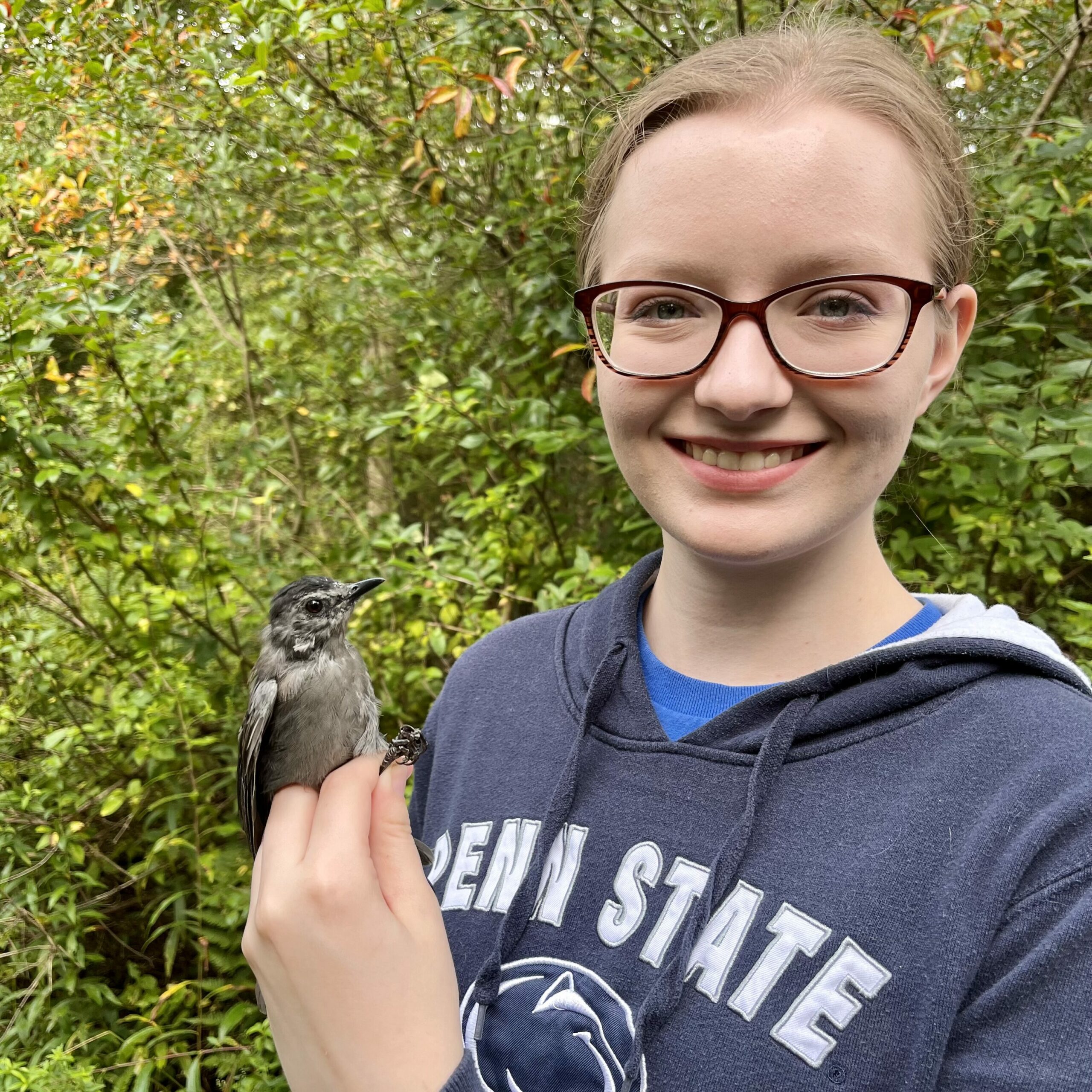We have been studying migratory songbirds for more than 18 years in and near Lackawanna State Park in Lackawanna County Pennsylvania, USA. Over the years we have examined a number of questions, mostly focused migration. In addition to capturing and banding birds for identification, we take assorted morphological measures, weigh, age (via plumage and measurements), and sex (via plumage, measurements, sex-specific breeding characteristics and/or genetically) them. Combined with daily weather data collected from Scranton Wilkes Barre Airport in Avoca, Pennsylvania, which is ~ 25 km south of our study location, these accumulated data allow us to ask longer-term questions about changes in migratory timing, site use and habitat quality (indicated by long-term change in mass gain rates), during spring migration. For the current work we also tested to see if long-term change differed by age or sex while also looking for evidence of long-term change in temperature and precipitation during spring migration in northeastern Pennsylvania.
Two of the most common species we capture are Gray Catbirds (Dumetella carolinensis) and Common Yellowthroats (Geothlypis trichas). Common Yellowthroats are sexually dichromatic, making it easy to determine the sex of adults. However, Gray Catbirds are sexually monochromatic making them difficult to sex outside of the breeding season without using DNA markers. As part of the current study we used a combination of morphological evidence (we captured birds into the early breeding season) and DNA to assign sex. Extending our field season into the breeding period permitted us to use morphological evidence (presence of a brood patch for females or an obvious cloacal protruberance for males) to determine sex. Beginning in 2015 we augmented this approach by using DNA collected via blood sampling.
We found no evidence that temperature changed during the spring migratory period (April-May) though did find evidence for long-term change in precipitation amount and probability. Further, we found that both species advanced arrival timing (Gray Catbirds ~ 6.6 days, Common Yellowthroats ~ 2.8 days per decade) and that these advances varied by sex or age in both species.
We found no evidence of protandry in Gray Catbirds. Further, we found evidence that site functionality changed for both species, as demonstrated by sex-related differences in yearly mass gain for birds using our site. Understanding the phenological response of migratory species to climate change requires consideration of climate change effects across multiple temporal and geographic scales, and, as our results suggest, consideration of differential effects of climate change by demographic groups within a species.
Dr. Robert Smith
University of Scranton
The results of this study were recently published in the Journal of Field Ornithology:
Smith, R. J., J. M. Graham, M. I. Hatch, E. Lasek-Nesselquist, and A. M. Royer. 2023. Long-term changes in arrival timing and site functionality in two passerine species during spring migration in northeastern Pennsylvania, USA. Journal of Field Ornithology 94(3):15. https://doi.org/10.5751/JFO-00342-940315
Header photo: Grey Catbird (Dumetella carolinensis) by Neil Lewis (NPS).


